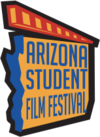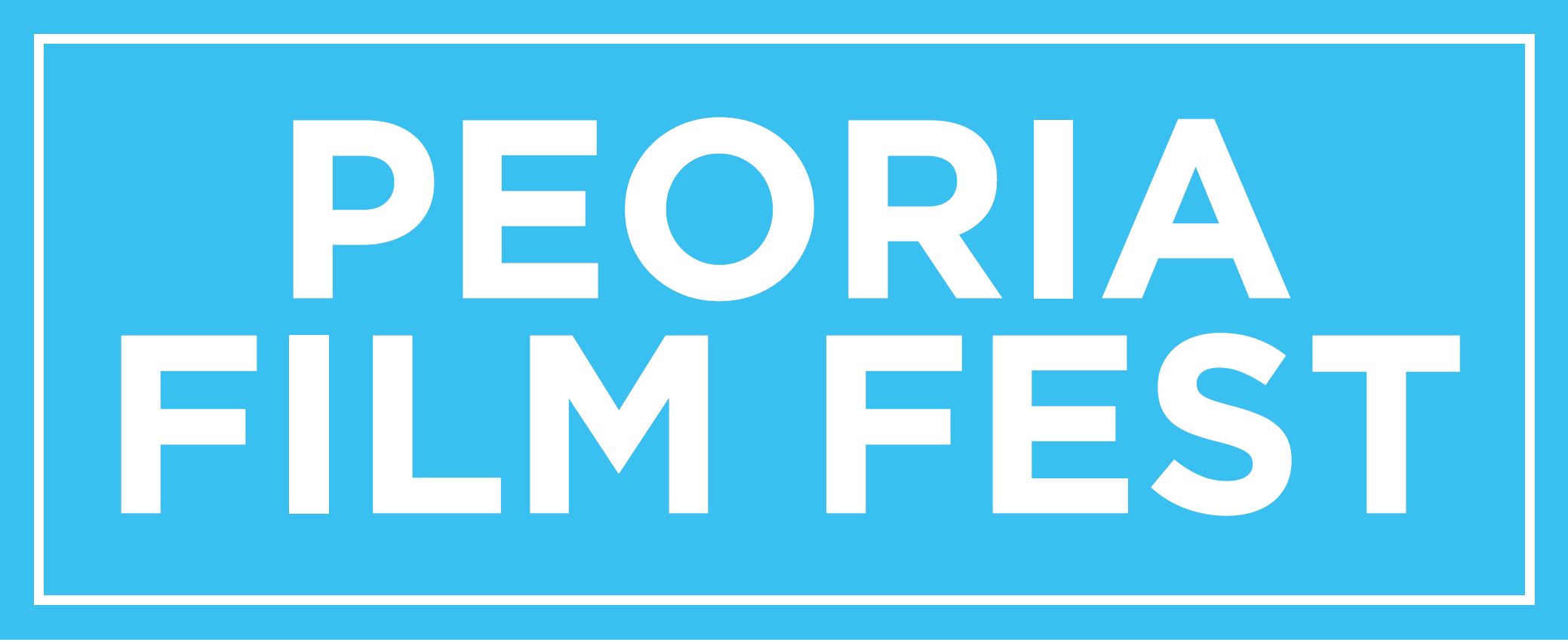By Michael Clawson of Terminal Volume
So many great films this year. It seems unfair to single 10 out, but here they are.
 Star Wars: The Force Awakens — Not only did J.J. Abrams right the ship that is Star Wars, he found himself on par with the original trilogy thanks to careful writing, exceptional special effects and new, interesting layers to the Star Wars mythology. I never knew I needed a Finn, Rey, Poe Dameron or Kylo Ren in place of Han, Luke and Leia — who return anyway — but here they after one movie and I can’t imagine the franchise without them anymore. Yes, there was a lot of hype on this one, but meeting the hype and even surpassing it at this level is really a rare feat.
Star Wars: The Force Awakens — Not only did J.J. Abrams right the ship that is Star Wars, he found himself on par with the original trilogy thanks to careful writing, exceptional special effects and new, interesting layers to the Star Wars mythology. I never knew I needed a Finn, Rey, Poe Dameron or Kylo Ren in place of Han, Luke and Leia — who return anyway — but here they after one movie and I can’t imagine the franchise without them anymore. Yes, there was a lot of hype on this one, but meeting the hype and even surpassing it at this level is really a rare feat.
- Slow West — John Maclean’s wacky western Slow West has imagery that is borderline surreal, but it’s deadly serious with bounty hunters, conniving killers and eccentric pioneers. About a Scottish teen (Kody Smit-McPhee) sent scurrying into the American wilderness to chase after his love, Slow West drops the stranger-in-a-strange-land into a variety of western scenes, from flooded riverbanks to burning Native American villages to deadly shootouts on the prairies. Michael Fassbender as bounty hunter is a nice touch, as is Ben Mendelsohn as his counterpart. Mostly, though, the film is a wonderful visual feast, one filled with imagery we’ve yet seen in a 115-year-old genre.
- The Revenant — This movie should come with a blanket, one skinned from the carcass of a great beast of the
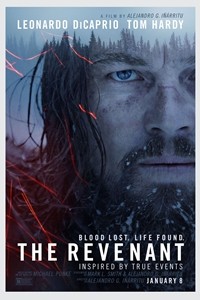 American frontier. It takes place in blizzard conditions, in icy forest landscapes, barren tundras of snow and in frigid rivers. Theaters are missing out on a unique theater experience by kicking on their air conditioning and watching the teeth rattle. In the early 1800s, Hugh Glass (Leonardo DiCaprio) and his Native American son are leading a group of trappers through hostile country. After a murder, a double-cross, a bear attack and a shallow grave, Hugh Glass claws from the soil with only an ounce of life still in him. As he crawls, hobbles and swims to safety he has his sights set on John Fitzgerald (Tom Hardy), a trapper with a colorful dialect who left Hugh for dead. Alejandro González Iñárritu’s survival film is a long slog out of hell for Glass, and his journey contains an incredible cross section of early American life with warring Native American tribes, French and American trappers, settlers, explorers and adventurers. It was a violent time, and nowhere is it better captured than in the violent and epic The Revenant.
American frontier. It takes place in blizzard conditions, in icy forest landscapes, barren tundras of snow and in frigid rivers. Theaters are missing out on a unique theater experience by kicking on their air conditioning and watching the teeth rattle. In the early 1800s, Hugh Glass (Leonardo DiCaprio) and his Native American son are leading a group of trappers through hostile country. After a murder, a double-cross, a bear attack and a shallow grave, Hugh Glass claws from the soil with only an ounce of life still in him. As he crawls, hobbles and swims to safety he has his sights set on John Fitzgerald (Tom Hardy), a trapper with a colorful dialect who left Hugh for dead. Alejandro González Iñárritu’s survival film is a long slog out of hell for Glass, and his journey contains an incredible cross section of early American life with warring Native American tribes, French and American trappers, settlers, explorers and adventurers. It was a violent time, and nowhere is it better captured than in the violent and epic The Revenant.
- Carol — Todd Haynes’ Carol is beautiful love story, made ugly by the era that it takes place in. In 1952, Carol (Cate Blanchett) is quite obviously a lesbian, a fact that humiliates her husband. While buying a toy for her child at a department store, Carol is smitten by Therese (said like ‘terr-rez,’ and played by Rooney Mara), who is enchanted by Carol’s deliberate demeanor and sure footing. What follows is a series of lunches, dates and a road trip that will expose Therese to Carol’s adoration. It’s a lovely courtship, one that is interrupted by the bigotry of the time period. As Carol disappears to court-ordered therapy to cure her “unsuitable attractions,” the film focuses on Therese, a budding photographer who is so unfamiliar with her attraction to Carol that she questions everything she once knew. This is a lovely movie with two radiant stars.
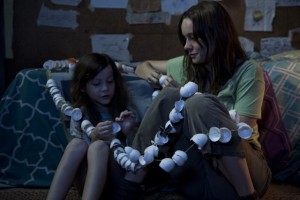 Room — Featuring two of the most inspiring performances of the year, Room is ripped from the headlines in the most compassionate way possible. It begins with a teenage girl (Brie Larson) who is kidnapped and held in seclusion in her rapist’s backyard shed that has been converted into her soundproof prison. Room picks up six years into her ordeal, and she now has 5-year-old son Jack (Jacob Tremblay), whose entire world is the four walls, floor and ceiling of the cell, which he refers to as “room” the way we refer to the planet as Earth. Although the product of a rape, and confined to one room for his whole life, Jack has been taught about the wonder of the world by his mother, whose innocence was stolen so long ago. What could be a grim drama, and it certainly has those moments, Room is largely about the good that a mother can inspire in her child and the love that brings them together to conquer their prison.
Room — Featuring two of the most inspiring performances of the year, Room is ripped from the headlines in the most compassionate way possible. It begins with a teenage girl (Brie Larson) who is kidnapped and held in seclusion in her rapist’s backyard shed that has been converted into her soundproof prison. Room picks up six years into her ordeal, and she now has 5-year-old son Jack (Jacob Tremblay), whose entire world is the four walls, floor and ceiling of the cell, which he refers to as “room” the way we refer to the planet as Earth. Although the product of a rape, and confined to one room for his whole life, Jack has been taught about the wonder of the world by his mother, whose innocence was stolen so long ago. What could be a grim drama, and it certainly has those moments, Room is largely about the good that a mother can inspire in her child and the love that brings them together to conquer their prison.
- Spotlight — In 2001, the Boston Globe’s investigative team turned its unblinking eye, or spotlight, on the Roman Catholic Church and its handling of child abuse by priests. Viewers expecting to see a bang-bang investigation with news van chases, mysterious tipsters in parking garages and “stop the presses” revelations were likely caught very off guard to find the exact kind of methodical, slow-moving investigative reporting that actually transpired at the Globe. The film coils together from a variety of different threads, all of which are researched, fact checked, confirmed and analyzed, because that’s how journalism actually happens. It’s this adherence to authenticity that makes Tom McCarthy’s Spotlight so mesmerizing. How do you make a gripping drama out of court records, grand jury testimony and old archdiocese yearbooks? Spotlight has found a way. The movies stars — including Michael Keaton, Mark Ruffalo, and Rachel McAdams — hold it all together with thorough and convincing portrayals that move this delicate subject matter forward.
- The Martian — Ridley Scott’s fantastic space flick The Martian is a story about small victories and small
 defeats, and how they add up to tell a story about science. We tend to forget that science got us up there in the cosmos, and science will bring us down, so to see science and engineering given such a starring role is a powerful reminder of what, and who, NASA is. When Matt Damon’s botanist is marooned on Mars, he does what any astronaut would do: “I’m going to have to science the shit out of this.” What follows is a thrill-ride involving radiation, poopy soil, ASCII translation, solar panels and hydrogen-burning water factories. Scott is no stranger to space having made Alien and Prometheus, but The Martian is a wholly unique endeavor for Scott and his gifted eye. It’s hopeful and upbeat, and even though millions of miles separate the Martian from earth victory is always within his grasp.
defeats, and how they add up to tell a story about science. We tend to forget that science got us up there in the cosmos, and science will bring us down, so to see science and engineering given such a starring role is a powerful reminder of what, and who, NASA is. When Matt Damon’s botanist is marooned on Mars, he does what any astronaut would do: “I’m going to have to science the shit out of this.” What follows is a thrill-ride involving radiation, poopy soil, ASCII translation, solar panels and hydrogen-burning water factories. Scott is no stranger to space having made Alien and Prometheus, but The Martian is a wholly unique endeavor for Scott and his gifted eye. It’s hopeful and upbeat, and even though millions of miles separate the Martian from earth victory is always within his grasp.
- Mad Max: Fury Road — Fury Road didn’t just reboot the Mad Max franchise — it rebooted the action movie. Without a cape, Marvel logo or hovercopter in sight George Miller single-handedly brought an entirely new level to the spectacle that has become action extravaganzas. With practical effects, bonkers interpretations of the post-apocalypse, a badass female hero, wild character and car creations, and a bona fide car religion to boot (“I am awaited in Valhalla!”), Mad Max: Fury Road took bigger movies with younger directors and showed them the door. If there was a ever a movie that deserved the adjective “high octane,” then here it is.
- Ex Machina — Alex Garland’s smoldering burn of science fiction could easily be the spiritual sequel to Spike Jonze’s Her, in which an arty schlub falls in love with his AI personal assistant, manifested as a lovely voice that whispers to him from his electronic devices. Here, though, technology has advanced to include skin, movement and a perk only a male designer would consider, sexual organs. Oscar Isaac is a billionaire inventor who invites one of his employees, played by Domhnall Gleeson, to his isolated compound, where they bro out with weights, tech and beer. Isaac plays a man wound so tight that every scene with him feels threatening and on the verge of a violent outburst. The employee musters along as best he can as he’s introduced to Ava (Alicia Vikander), an AI creation that is the most human part of the film. Between the three explosive lead performances, and the effectively claustrophobic sets, Ex Machina churns out one of the most subdued robot movies ever made, one that that ends on a perfect note that is equally haunting and existentially enlightening.
 The Big Short — It’s remarkable that Americans lost their jobs, lost their homes, were uprooted from their lives and scattered to the wind and many still don’t know what caused the recession, and why. The Big Short is the blueprint for the whole damn thing: the housing bubble, the sub-prime mortgage calamity, the collapse of Wall Street, the imploding bond market … all of it, every ugly derivative and security swap from day traders right on up to CEOs. The fact that Adam McKay’s movie, based on Michael Lewis’s book, is both informative and devilishly funny is the film’s saving grace. It’s also supremely well acted, it routinely breaks the fourth wall to address us directly, is edited with style and purpose, and paced so viewers can laugh and learn at the same time. There’s a lot going on here, but The Big Short succeeds in holding it all together with a vengeance.
The Big Short — It’s remarkable that Americans lost their jobs, lost their homes, were uprooted from their lives and scattered to the wind and many still don’t know what caused the recession, and why. The Big Short is the blueprint for the whole damn thing: the housing bubble, the sub-prime mortgage calamity, the collapse of Wall Street, the imploding bond market … all of it, every ugly derivative and security swap from day traders right on up to CEOs. The fact that Adam McKay’s movie, based on Michael Lewis’s book, is both informative and devilishly funny is the film’s saving grace. It’s also supremely well acted, it routinely breaks the fourth wall to address us directly, is edited with style and purpose, and paced so viewers can laugh and learn at the same time. There’s a lot going on here, but The Big Short succeeds in holding it all together with a vengeance.

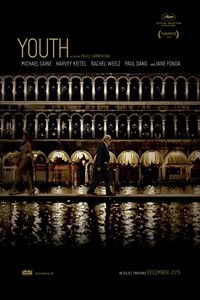 “Youth” - Director Paolo Sorrentino offers a story of two longtime friends - played by Michael Caine and Harvey Keitel - who ponder big and small questions under a backdrop of an extravagant hotel in the Swiss Alps. Sorrentino intermingles stunning visuals and pleasing sounds with intimate conversations, and Caine and Keitel are at the top of the game.
“Youth” - Director Paolo Sorrentino offers a story of two longtime friends - played by Michael Caine and Harvey Keitel - who ponder big and small questions under a backdrop of an extravagant hotel in the Swiss Alps. Sorrentino intermingles stunning visuals and pleasing sounds with intimate conversations, and Caine and Keitel are at the top of the game.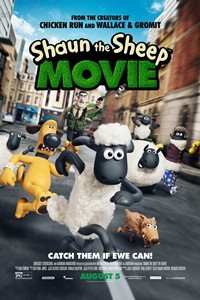 engineers a day off for the flock but inadvertently creates a big problem for the farmer. The painstaking top-motion animation (from Aardman Animations, the “Wallace and Gromit” folks) is only topped by the totally creative narrative and endearing characters.
engineers a day off for the flock but inadvertently creates a big problem for the farmer. The painstaking top-motion animation (from Aardman Animations, the “Wallace and Gromit” folks) is only topped by the totally creative narrative and endearing characters.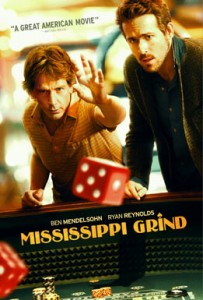 “Mississippi Grind” - Gerry (Ben Mendelsohn) and Curtis (Ryan Reynolds) are a pair of degenerate gamblers who embark on a sooty trip down America’s most famous river to make some bucks. They form an immediate friendship and share great on-screen rapport, while directors/writers Anna Boden and Ryan Fleck make us literally flip a coin to guess if they will win or lose at every turn. Mendelsohn’s performance deserves an Oscar nomination.
“Mississippi Grind” - Gerry (Ben Mendelsohn) and Curtis (Ryan Reynolds) are a pair of degenerate gamblers who embark on a sooty trip down America’s most famous river to make some bucks. They form an immediate friendship and share great on-screen rapport, while directors/writers Anna Boden and Ryan Fleck make us literally flip a coin to guess if they will win or lose at every turn. Mendelsohn’s performance deserves an Oscar nomination.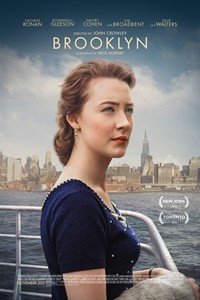 life in the bustling streets of New York City while struggling with the emotional pulls of home in County Wexford. Along with Eilis’ (Ronan) homesickness, writer Nick Hornby pens several amusing and warm moments with her boarding housemates and a new love interest, and with the film’s throwback vibe to pictures of yesterdecade, “Brooklyn” is the most graceful and lovely cinematic experience of the year.
life in the bustling streets of New York City while struggling with the emotional pulls of home in County Wexford. Along with Eilis’ (Ronan) homesickness, writer Nick Hornby pens several amusing and warm moments with her boarding housemates and a new love interest, and with the film’s throwback vibe to pictures of yesterdecade, “Brooklyn” is the most graceful and lovely cinematic experience of the year.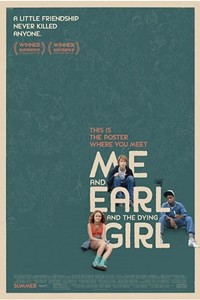 “Me and Earl and the Dying Girl” - In one of the most effective high school stories in long memory, a self-doubting teen (Thomas Mann) befriends a fellow student stricken with leukemia (Olivia Cooke), and the particularly well-written script provides an equally hilarious and affecting journey about teenagers coping with untimely circumstances. Director Alfonso Gomez-Rejon guides the material with a Wes Anderson-like flair, as Mann, Cooke and RJ Cyler (as Earl) deliver especially likable and sympathetic performances while navigating through the clumsy, exposed and thoughtful emotions of youth.
“Me and Earl and the Dying Girl” - In one of the most effective high school stories in long memory, a self-doubting teen (Thomas Mann) befriends a fellow student stricken with leukemia (Olivia Cooke), and the particularly well-written script provides an equally hilarious and affecting journey about teenagers coping with untimely circumstances. Director Alfonso Gomez-Rejon guides the material with a Wes Anderson-like flair, as Mann, Cooke and RJ Cyler (as Earl) deliver especially likable and sympathetic performances while navigating through the clumsy, exposed and thoughtful emotions of youth.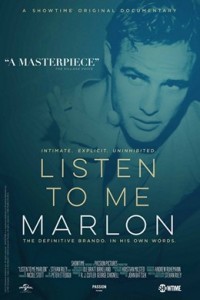 chronicled hundreds of hours of personal audio recordings as a diary of sorts, and director Stevan Riley pieced together the man’s personal thoughts in a truly amazing reveal over a 1 hour 43 minute runtime. Paired with photos and historical video footage of movie clips and interviews, Brando - in his own words - recites and reflects his innermost views on his romantic relationships, colleagues, preparation for his most coveted roles, and his painful childhood. This extraordinary find is easily the documentary of the year.
chronicled hundreds of hours of personal audio recordings as a diary of sorts, and director Stevan Riley pieced together the man’s personal thoughts in a truly amazing reveal over a 1 hour 43 minute runtime. Paired with photos and historical video footage of movie clips and interviews, Brando - in his own words - recites and reflects his innermost views on his romantic relationships, colleagues, preparation for his most coveted roles, and his painful childhood. This extraordinary find is easily the documentary of the year.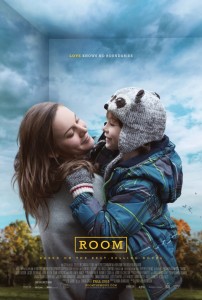 “Room” - Brie Larson delivers the performance of year as a young mother living in an uncommonly cramped one-room space with her 5-year-old son (Jacob Tremblay). The movie initially presents the circumstances of their odd living situation as a confusing puzzle, but eventually the secrets of “the room” are revealed, and the narrative then splits from one incredibly difficult challenge to an altogether different confrontation. Narrated - at times - by Jack (Tremblay), this raw story expresses the beauty of our everyday world through a child’s voice, and Ma (Larson) professes the feverous bond of mother and child through her actions.
“Room” - Brie Larson delivers the performance of year as a young mother living in an uncommonly cramped one-room space with her 5-year-old son (Jacob Tremblay). The movie initially presents the circumstances of their odd living situation as a confusing puzzle, but eventually the secrets of “the room” are revealed, and the narrative then splits from one incredibly difficult challenge to an altogether different confrontation. Narrated - at times - by Jack (Tremblay), this raw story expresses the beauty of our everyday world through a child’s voice, and Ma (Larson) professes the feverous bond of mother and child through her actions.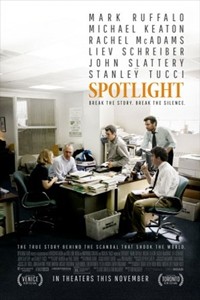 McAdams, and Liev Schreiber), director/co-writer Tom McCarthy provides a wholly mesmerizing account of a tenacious group of Boston Globe reporters who uncover a widespread Catholic priest sexual abuse scandal. The journalists bang on figurative locked doors while dozens of Boston players - big and small - carry differing agendas to expose or cover up the sordid details. McCarthy opens up a world of exemplary journalism practices to the audience and reinforces the importance of the media as the Fourth Pillar of Democracy. This riveting movie leaves you hanging on every moment and is the best picture of 2015.
McAdams, and Liev Schreiber), director/co-writer Tom McCarthy provides a wholly mesmerizing account of a tenacious group of Boston Globe reporters who uncover a widespread Catholic priest sexual abuse scandal. The journalists bang on figurative locked doors while dozens of Boston players - big and small - carry differing agendas to expose or cover up the sordid details. McCarthy opens up a world of exemplary journalism practices to the audience and reinforces the importance of the media as the Fourth Pillar of Democracy. This riveting movie leaves you hanging on every moment and is the best picture of 2015. Monte Yazzie’s Best Films of 2015
Monte Yazzie’s Best Films of 2015
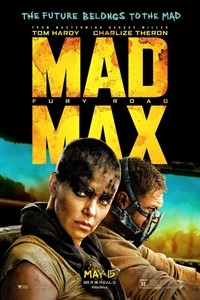 Imperator Furiosa, Ms. Theron confidently controls the film with stunning screen presence. Mr. Miller executes the film with exceptional style and skill, making “Mad Max: Fury Road” feel more suited for the arthouse than the grindhouse.
Imperator Furiosa, Ms. Theron confidently controls the film with stunning screen presence. Mr. Miller executes the film with exceptional style and skill, making “Mad Max: Fury Road” feel more suited for the arthouse than the grindhouse.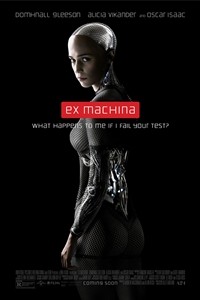 Machina”, a methodically structured film with an intelligent narrative directed by Alex Garland. While many of the films that deal with science fiction are cluttered with special effects, Mr. Garland utilizes these tools to build an impressive, beautiful, and emotional artificial being known as Ava, played impeccably by actor Alicia Vikander. “Ex Machina” focuses on relationships between men and women, the advancing world and how it connects with progressing technology, and the trappings and limitations of science. It is an exceptional film that asks difficult questions and allows the viewer to interpret the answers however they choose.
Machina”, a methodically structured film with an intelligent narrative directed by Alex Garland. While many of the films that deal with science fiction are cluttered with special effects, Mr. Garland utilizes these tools to build an impressive, beautiful, and emotional artificial being known as Ava, played impeccably by actor Alicia Vikander. “Ex Machina” focuses on relationships between men and women, the advancing world and how it connects with progressing technology, and the trappings and limitations of science. It is an exceptional film that asks difficult questions and allows the viewer to interpret the answers however they choose. fight a faceless foe. It’s a film that lingers in an atmosphere of fear and builds suspense in subtle yet effective ways. Whether the enchanting cinematography by Roger Deakins, which is a visual descent into darkness, or the narrative penned by Taylor Sheridan that displays the bleak disenchantment of the whole situation. “Sicario” is consistently tense and foreboding; it’s a film that drops the viewer in the middle of a frantic and confused setting, and then continues the journey amidst building chaos. Director Denis Villeneuve is a skillful director and “Sicario” is one of his best films.
fight a faceless foe. It’s a film that lingers in an atmosphere of fear and builds suspense in subtle yet effective ways. Whether the enchanting cinematography by Roger Deakins, which is a visual descent into darkness, or the narrative penned by Taylor Sheridan that displays the bleak disenchantment of the whole situation. “Sicario” is consistently tense and foreboding; it’s a film that drops the viewer in the middle of a frantic and confused setting, and then continues the journey amidst building chaos. Director Denis Villeneuve is a skillful director and “Sicario” is one of his best films. In the eighth film from Quentin Tarantino the director takes a group of unredeemable characters and locks them in a shack during a blizzard in post-Civil War Wyoming. The three-hour long epic, released in a special 70mm presentation, displays Mr. Tarantino meticulously building a mystery while also incorporating an interesting amount of social commentary that transcends beyond the time period depicted in the film; it’s compelling to see everything slowly unravel. The film finds further success with stunning cinematography and a beautiful score, composed by the legendary Ennio Morricone. “The Hateful Eight” is Quentin Tarantino self-indulgently doing what he does best.
In the eighth film from Quentin Tarantino the director takes a group of unredeemable characters and locks them in a shack during a blizzard in post-Civil War Wyoming. The three-hour long epic, released in a special 70mm presentation, displays Mr. Tarantino meticulously building a mystery while also incorporating an interesting amount of social commentary that transcends beyond the time period depicted in the film; it’s compelling to see everything slowly unravel. The film finds further success with stunning cinematography and a beautiful score, composed by the legendary Ennio Morricone. “The Hateful Eight” is Quentin Tarantino self-indulgently doing what he does best. Joy
Joy
 Blanchett and Mara offer award-worthy performances in ‘Carol’
Blanchett and Mara offer award-worthy performances in ‘Carol’
 ‘Concussion’ draws some frightening conclusions
‘Concussion’ draws some frightening conclusions
 Hitchcock/Truffaut
Directed by: Kent Jones
Hitchcock/Truffaut
Directed by: Kent Jones In the Heart of the Sea
In the Heart of the Sea
 ‘Krampus’ does not grant enough horror or comedy wishes
‘Krampus’ does not grant enough horror or comedy wishes


